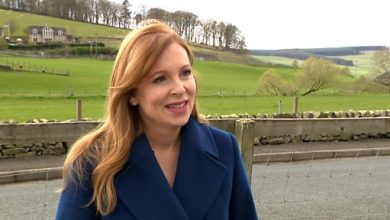Fed Directors Bostic and Kashkari Explain Why They Backed a Massive Rate Cut

Other Federal Reserve officials have explained why they favor a deep 50 basis point interest rate cut instead of a more modest first cut, citing progress on inflation and a slowing labor market.
Both developments “have come much more quickly than I imagined at the beginning of the summer,” Atlanta Fed President Raphael Bostic said in a speech.
“I am now considering normalizing monetary policy sooner than I thought just a few months ago.”
Minneapolis Fed President Neel Kashkari said in an essay Monday that he voted for the 50 basis point cut because “the balance of risks has shifted from higher inflation to the risk of further weakening in the labor market, warranting a cut in the federal funds rate.”
Chicago Fed President Austan Goolsbee also said Monday that he was “comfortable” with a 50 basis point cut, seeing it “as a demarcation” that signals the central bank is returning to thinking as much about its mandate of achieving maximum employment as its other mandate of ensuring price stability.
If the Fed wants to avoid a recession, he added, then “we cannot be left behind.”
Bostic, Kashkari and Goolsbee are the latest Fed policymakers to outline their thoughts on the Fed’s first rate cut since 2020, a move that effectively ended the central bank’s most aggressive campaign to cool inflation since the 1980s.
Fed Chairman Jerome Powell, speaking to reporters Wednesday, said the deeper 50 basis point cut was an attempt to get ahead of a slowing labor market now that inflation is falling.
But not everyone at the Fed agrees.
The lone dissenter to the Fed’s policy decision, Federal Reserve Governor Michelle Bowman, said Friday that “a more modest first step in this process would have been a preferable action” because inflation has still not fallen to the central bank’s 2% target.
“I see the risk that the Committee’s broader policy action could be interpreted as a premature declaration of victory for our price stability mandate,” Bowman said in a statement.
Bowman was the only Fed member to disagree with Wednesday’s policy decision, saying she preferred a more modest cut of a quarter percentage point rather than a half percentage point. She is the first to do so in two years and the first Fed governor to disagree since 2005.
Clearly, last week’s decision was also narrowly reached by other Fed officials.
Bostic acknowledged that Monday, saying he felt the Fed had not yet declared victory over inflation. That lingering concern might have led it to cut rates by 25 basis points, but that would have ignored the recent slowdown in the jobs market.
“The trajectory of inflation in 2024 has been volatile, and the unpredictable nature of rents and house prices continues to worry me,” he said. “I will not feel comfortable declaring victory if we fail to meet our inflation target.”
The Fed will get a new reading on its preferred inflation measure, the personal consumption expenditures (PCE) price index, this Friday.
Analysts expect Friday’s PCE figure to come in at 2.3% year-on-year, down from the previous month’s 2.5% annual gain, according to Bloomberg data.
The fact that inflation has not yet reached the Fed’s 2% target prevents Bostic from making deeper cuts.
But Kashkari doesn’t see many signs that inflation could surprise on the upside, pointing to wages and prices for basic non-housing services that continue to fall.
Looking ahead, Kashkari said he thought interest rates were still too high, but did not say how quickly or to what level they should fall.
“While there remain mixed signals on the underlying strength of the U.S. economy and I still don’t know how tight policy is, I think policy remains tight today,” Kashkari said.
Although a slowing labor market suggests a weakening economy, he added, other measures suggest economic strength, pointing to the resilience of GDP and consumer spending that suggest underlying demand remains solid.
Kashakari said he has heard cautious optimism about the underlying health of the economy and that while a recession can never be ruled out, his contacts do not see one on the horizon.
One development that could prompt Bostic to cut rates more quickly is a deterioration in the labor market.
For him, the labor market is not yet in the red and he does not believe that it has weakened dangerously. However, he points out that employment growth over the past year has not been as strong as early data suggested.
“Any further evidence of significant weakening in the labor market over the next month will certainly change my view on how stringent a policy adjustment needs to be,” Bostic said.
Goolsbee, the Chicago Fed president, said rates need to come down “significantly going forward” if the Fed wants the economy and the labor market to stay where they are now.
“Given that labor markets tend to deteriorate quickly when they turn and that monetary policy takes time to act, it is simply not realistic to wait for problems to emerge.”
Click here for an in-depth analysis of the latest stock market news and events moving stock prices
Read the latest financial and business news from Yahoo Finance


